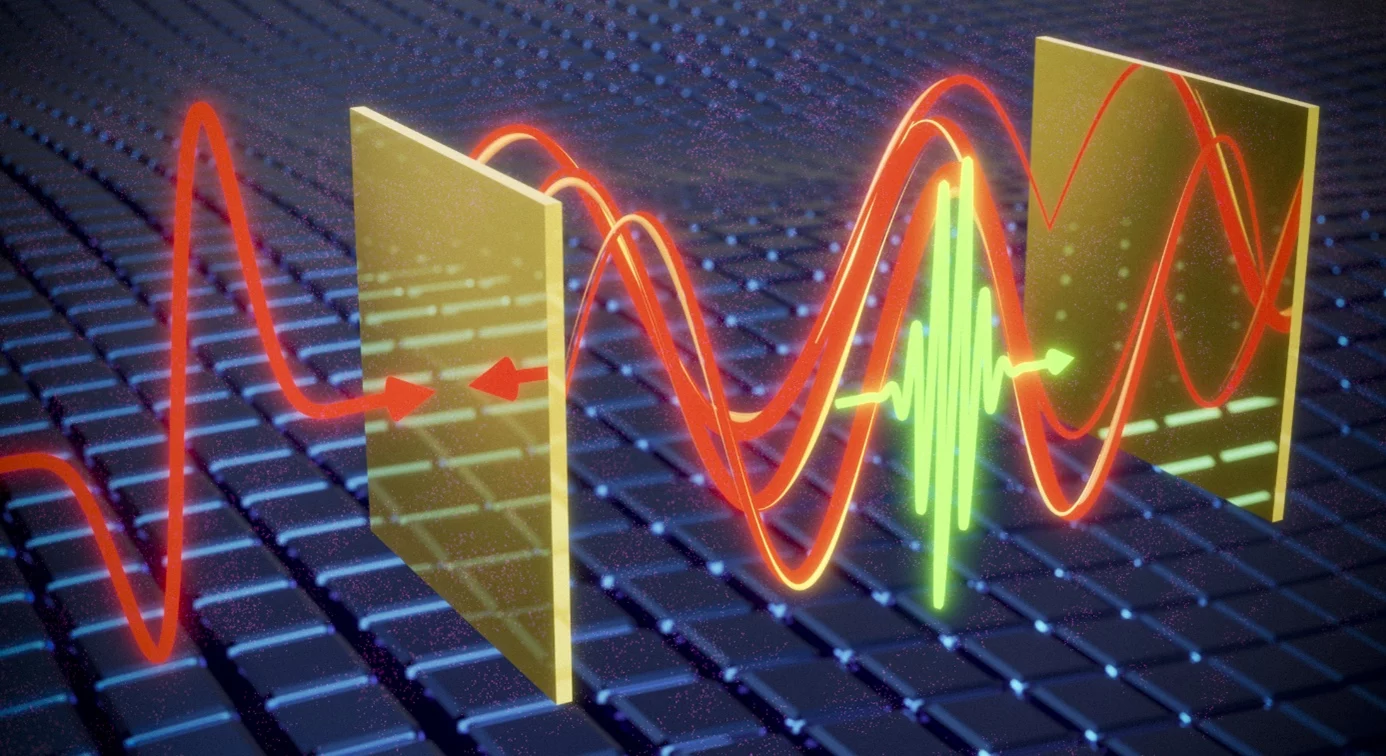Scientists from the Institute of Radiation Physics at Helmholtz Center Dresden-Rossendorf and the Department of Physical Chemistry at the Fritz Haber Institute of the Max Planck Society have created a unique experimental platform that allows them to measure the electric fields of light trapped between two mirrors with sub-cycle precision. The study has recently been published in the Light: Science & Applications journal.
 Experimental principle of electro-optic cavities (EOCs) measuring the multiple echoes of the THz light field (red) with a visible probe pulse (green) during a nonlinear interaction inside a Fabry–Pérot cavity (gold mirrors). Image Credit: Max-Planck-Gesellschaft
Experimental principle of electro-optic cavities (EOCs) measuring the multiple echoes of the THz light field (red) with a visible probe pulse (green) during a nonlinear interaction inside a Fabry–Pérot cavity (gold mirrors). Image Credit: Max-Planck-Gesellschaft
These electro-optic Fabry-Pérot resonators enable accurate manipulation and examination of light-matter interactions, especially within the terahertz (THz) spectral range. By creating a tunable hybrid-cavity design and analyzing and modeling its intricate sets of permitted modes, physicists can transition between nodes and maxima of the light waves precisely at the desired location. This research paves the way for new investigations into quantum electrodynamics and rapid control of material characteristics.
Introduction to Electro-Optic Cavities
The group of physicists has developed a new technique to measure electric fields inside cavities, a major breakthrough in cavity electrodynamics. They have obtained sub-cycle timescale measurements by employing electro-optic Fabry-Pérot resonators, which provide information on light and matter at the precise location of their interaction.
Focus on the Terahertz Spectral Range
The study of cavity electrodynamics examines how materials positioned between mirrors change their dynamic behavior and properties in response to light. This work focuses on the terahertz (THz) spectral range, where low-energy excitations control the basic material properties.
Measurement of novel states in the cavity that behave like both matter and light excitations simultaneously will help us better understand these interactions.
Innovative Hybrid Cavity Design
Additionally, the researchers have created a hybrid cavity design that combines a split detector crystal inside the cavity with a tunable air gap. Thanks to the new design's precise control over internal reflections, selective interference patterns can be produced on demand.
Mathematical models back up these observations, offering a way to decipher the complex cavity dispersion and better comprehend the physics at play.
Future Implications
This work makes future investigations into cavity light-matter interactions possible, which could have implications for material science, quantum computing, and other fields.
Our work opens new possibilities for exploring and steering the fundamental interactions between light and matter, providing a unique toolset for future scientific discoveries.
Michael S. Spencer, Study First Author, Fritz Haber Institute of the Max Planck Society
Professor Dr. Sebastian Maehrlein, Leader of the Research Group, summarized, “Our EOCs provide a highly accurate field-resolved view, inspiring novel pathways for cavity quantum electrodynamics in experiment and theory.”
Journal Reference:
Spencer, M. S., et al. (2025) Electro-optic cavities for in-situ measurement of cavity fields. Light Science & Applications. doi.org/10.1038/s41377-024-01685-x.